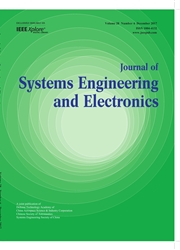

 中文摘要:
中文摘要:
一个人工的免疫系统与 self/non-self 选择被建模在活动机器人演示克服反常。有免疫力的建模包括天生的有免疫力的建模和适应有免疫力的建模。self/non-self 选择包括察觉和识别,并且 self/non-self 察觉基于演示的正常模型。在察觉以后, thenon 自我识别为适应免疫基于学习未知非自我。Thelearning 从例子在神经网络上或在学习机制上被设计。最后步是所有非自我的消除并且失败在上演示。活动机器人演示的免疫与 Java 被规划测试途径的有效性。一些蠕虫感染了活动机器人演示,并且引起了反常。免疫模拟的结果证明有免疫力的程序能检测 100% 蠕虫,认出所有已知的蠕虫和很未知的蠕虫,并且消除蠕虫。而且,活动机器人演示的损坏文件都能通过正常模型和免疫被修理。因此,活动机器人演示的有免疫力的建模在一些反蠕虫和反常察觉应用有效、可编程。
 英文摘要:
英文摘要:
An artificial immune system was modelled with self/non-self selection to overcome abnormity in a mobile robot demo. The immune modelling includes the innate immune modelling and the adaptive immune modelling. The self/non-self selection includes detection and recognition, and the self/non-self detection is based on the normal model of the demo. After the detection, the non-self recognition is based on learning unknown non-self for the adaptive immunization. The learning was designed on the neural network or on the learning mechanism from examples. The last step is elimination of all the non-self and failover of the demo. The immunization of the mobile robot demo is programmed with Java to test effectiveness of the approach. Some worms infected the mobile robot demo, and caused the abnormity. The results of the immunization simulations show that the immune program can detect 100% worms, recognize all known Worms and most unknown worms, and eliminate the worms. Moreover, the damaged files of the mobile robot demo can all be repaired through the normal model and immunization. Therefore, the immune modelling of the mobile robot demo is effective and programmable in some anti-worms and abnormity detection applications.
 同期刊论文项目
同期刊论文项目
 同项目期刊论文
同项目期刊论文
 期刊信息
期刊信息
